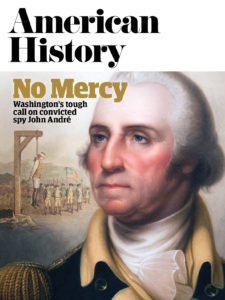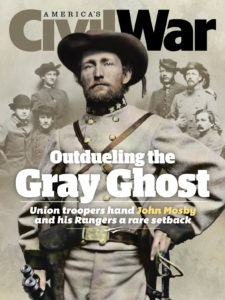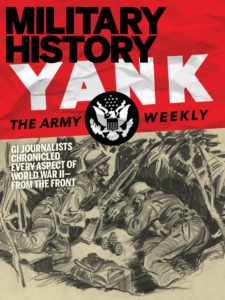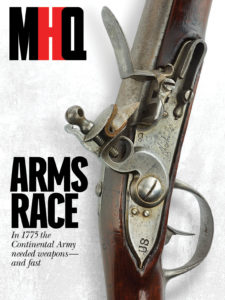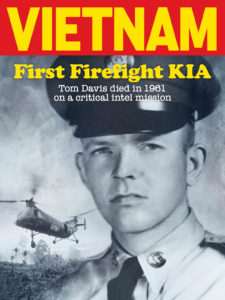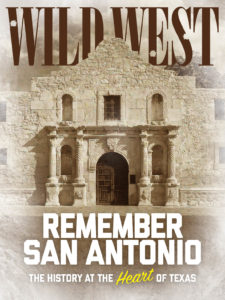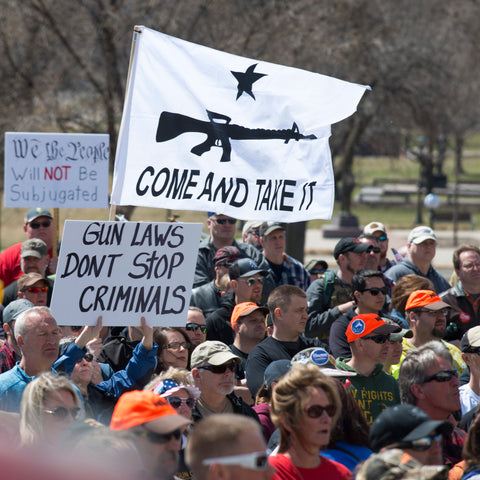
The History of Gun Control and the Second Amendment
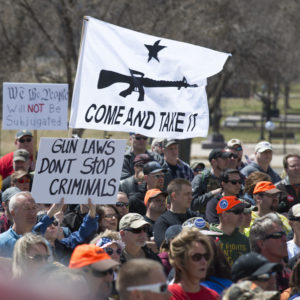
The U.S. Supreme Court is expected within days to rule on the validity of a New York state law that places strict limits on carrying handguns, New York State Rifle & Pistol Inc. v. Bruen — and the decision could rewrite the heated American debate over gun control.
Opponents of the law, which requires those seeking a concealed-carry license to prove that they need it for self-protection, argue that the statute is barred by the Second Amendment to the Constitution. But the fact that the Justices are now considering overturning the New York law — which has been in effect for more than a century — is a vivid indicator of how the justices’ view of the Second Amendment has taken a dramatic turn in the 21st century, and how what were once unanimous decisions that the amendment’s reach is limited have turned into rancorous debates at a sharply divided court.
WHAT DOES THE SECOND AMENDMENT SAY?
The Second Amendment was added to the Constitution as part of the Bill of Rights in December 1791. It reads: “A well regulated militia, being necessary to the security of a free State, the right of the people to keep and bear Arms, shall not be infringed.”
That was not a controversial provision, merely codifying a widely held view on the legitimacy of a citizen militia and repeating a guarantee included in the British Bill of Rights of 1689 and the earlier U.S. Articles of Confederation.
What gun controls were and were not allowed was so uncontroversial that it was 1939 before the first case in which the U.S. Supreme Court ruled on whether the Second Amendment applied to a specific law curbing gun ownership. In fact, the Supreme Court had been in business for 85 years before it got its first case involving the Second Amendment at all. And then it was only a peripheral issue.
THE SUPREME COURT’S FIRST GUN CONTROL CASE
1875’s United States v. Cruikshank had its origins in disputes over the outcome of the 1872 gubernatorial election in Louisiana — disputes that led to such violence that more than 100 Blacks were killed. The federal government charged some of the white vigilantes with violating an 1870 statute making it unlawful to conspire to deprive anyone of their constitutional rights. Part of the charges were that the defendants had taken away the arms with which the Blacks were defending themselves.
The justices unanimously freed the vigilantes, saying that the constitutional curbs on seizing guns do not apply to actions of individuals. The Second Amendment, they said, doesn’t give anyone the right to own firearms, it merely prohibits governmental action to take away their guns.
But the opinion by Chief Justice Morrison Waite went much further. The Second Amendment, he wrote “means no more than it shall not be infringed by Congress. This is one of the amendments that has no other effect than to restrict the powers of the national government.”
In other words, he said, the Bill of Rights creates no barriers to firearms regulation by state or local government.
GET HISTORY’S GREATEST TALES—RIGHT IN YOUR INBOX
Subscribe to our Historynet Now! newsletter for the best of the past, delivered every Wednesday.
THE SUPREME COURT SAYS AGAIN IT’S UP TO STATES
The Supreme Court — again unanimously — reaffirmed that position 11 years later. The case had to do with the validity of a $10 fine.
It was imposed on Herman Presser, a member of a group of Chicago workers of German background organized to counter the armed private guard squads formed by local employers. He headed some 400 of the members as they marched through Chicago streets carrying rifles.
That violated a state statute against any private militia not licensed by the governor. Presser insisted that prosecuting him infringed on his Second Amendments right to bear arms, but the justices were having none of it. Reiterating the Cruikshankstance, in Presser v. Illinois Justice William B. Woods wrote unequivocally: “[T]he amendment is a limitation only upon the power of Congress and the national government, and not upon that of the state.”
STATES PASS MORE GUN CONTROL LAWS
From the beginning of the republic, states had placed some limits on gun owners, such as forbidding carrying them in crowded places. But with the Supreme Court assurance that such statutes were valid, in the last decades of the 19th century, the popularity of such laws in state legislatures really took off.
Twenty-eight states had some curbs on where guns could be carried, and 15 barred minors from owning guns. In 1875, Wyoming actually banned all personally owned firearms from “any city, town or village.”
None of these state statutes were challenged at the Supreme Court.
GANGLAND VIOLENCE AND FEDERAL GUN CONTROL
It was 53 years before the Supreme Court again ruled on a Second Amendment case. United States v. Millerwas the first time the Justices looked directly at a Second Amendment challenge to a gun control law; without dissent they continued to emphasize that the amendment leaves lots of leeway for government regulation.
Under scrutiny was the very first significant federal curb on gun ownership. The 1934 National Firearms Act, passed in reaction to bloody criminal gang shootouts, imposed no bans; it did demand that various guns (those mostly used by criminals) be registered for a $200 fee. Two men arrested for bringing an unregistered sawed-off shotgun from Oklahoma into Arkansas argued that the law was an invalid incursion on their right to bear arms.
But the decision found that right was a very narrow one. The opinion by Justice James C. McReynolds interpreted the amendment as applying only to a defensive militia, and found that a sawed-off shotgun does not have “some reasonable relationship to the preservation or efficiency of a well regulated militia.”
MODERN GUN CONTROL: THE SUPREME COURT REVERSES COURSE
It was not until 1995 that there was a hint that new personnel on the court might be bringing with them a different reading of the Second Amendment. It came in United States v. Lopez, a challenge to the conviction of Alfonso Lopez Jr. for bringing a concealed handgun and bullets to his high school in San Antonio, Texas — a violation of a 1990 federal law banning possession of any firearm “at a place that the individual knows, or has reasonable cause to believe, is a school zone.”
The high court threw out the conviction and held the law invalid as reaching beyond the powers the powers Congress claimed it had to regulate commerce. The Second Amendment was not at issue at all.
But Lopezis a significant part of gun rights history because it was the very first time the Supreme Court struck down a firearms control law. And the justices’ 5-4 vote showed that the unanimity that had characterized the previous gun control decisions had been shattered.
HITTING THE RESET BUTTON ON THE SECOND AMENDMENT
In 2008, those hints that the Supreme Court was moving away from its narrow reading of the constitutional limits on gun control became unequivocal reality. With another 5-4 decision, the justices tremendously broadened the Second Amendment prohibitions and threw into doubt more than a century of precedents.
That case, Washington, D.C. v. Heller, invalidated a broad gun control law in the District of Columbia that barred possession of handguns and required that other firearms be registered and kept unassembled, even in the owner’s home. Robert A. Levy, a lawyer who sensed that the Supreme Court was ready to changes its views of gun control laws, had rounded up a diverse group of six local residents to challenge the law.
At the high court, a five-justice majority agreed with Levy’s clients. The opinion written by Justice Antonin Scalia specifically rejected the interpretation that the Second Amendment was exclusively about owning firearms that could be used by a militia, calling that language only a “prefatory clause.” In fact, he wrote, “the Second Amendment right is exercised individually and belongs to all Americans” whether or not they have an intention of participating in a militia.
In other words, as a general rule, neither the federal nor state or local government can put curbs on individual gun ownership.
“The court in Heller almost hits the reset button on the Second Amendment,” Duke University law professor Joseph Blocher, co-director of the university’s Center for Firearms Law, said.
Scalia did go to pains to make clear that that rule was not absolute — that some gun controls were valid, albeit only narrow ones.
“Nothing in our opinion should be taken to cast doubt on the longstanding prohibitions on the possession of firearms by felons and the mentally ill, or laws forbidding the carrying of firearms in sensitive places such as schools and government buildings,” he wrote.
THE POST-HELLER GUN-CONTROL LANDSCAPE
Heller is the standard by which all gun control measures are now judged. In two cases that it took up before the current one assessing the New York gun carry law, the Supreme Court made that clear. Because the District of Columbia is a federal enclave, some argued that Heller did not apply to the state and local laws. But in 2010, again in a 5-4 decision, the court held that the same standard applies to all jurisdictions, thereby invalidating a Chicago policy that for 50 years had effectively banned the acquisition of handguns. And in 2016, in a case the justices thought was so clear-cut that they didn’t need to hear oral arguments, the high court invalidated a Massachusetts ban on stun guns, even thought it had been upheld by the Massachusetts Supreme Judicial Court, that state’s highest court.
historynet magazines
Our 9 best-selling history titles feature in-depth storytelling and iconic imagery to engage and inform on the people, the wars, and the events that shaped America and the world. Sale! Save $7.99 on your subscription today!
